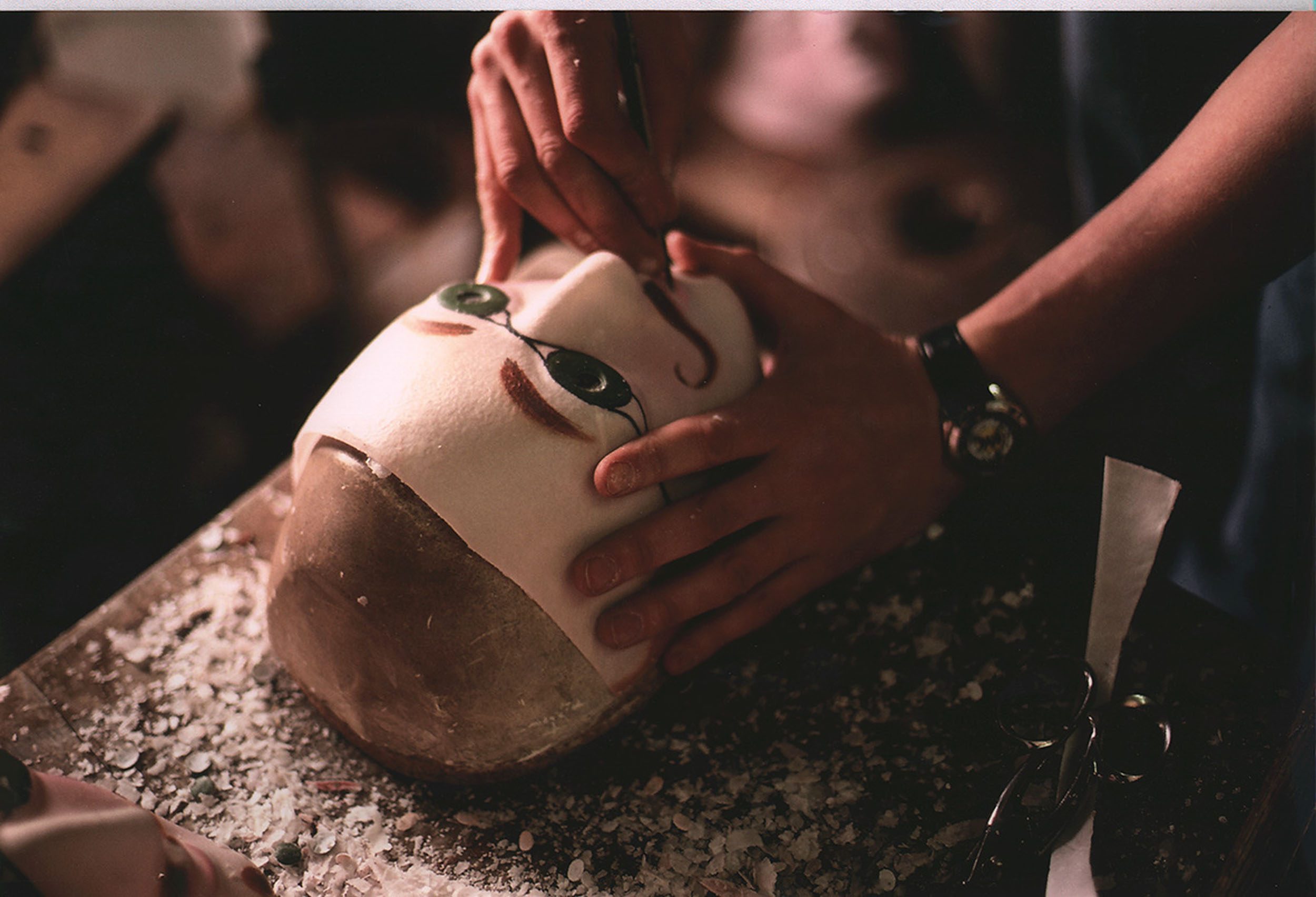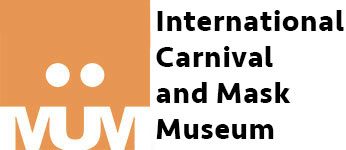Know-how and materials
 The contexts of production of the masks are infinite as well. Be they industrial or artisan products, made in a factory or in an artist’s workshop, made in secret or not, by men or women, the items of the Museum testify to an incredible know-how, which in some cases has disappeared and in others, on the contrary, is still very much alive.
The contexts of production of the masks are infinite as well. Be they industrial or artisan products, made in a factory or in an artist’s workshop, made in secret or not, by men or women, the items of the Museum testify to an incredible know-how, which in some cases has disappeared and in others, on the contrary, is still very much alive.
Several types of materials are used for the making of the masks and costumes :
- minerals : stone, gold, silver, copper, iron, precious stone, terracotta, clay etc.
- plant materials : leaves, wood, bark, straw, dried grass, raffia, resin, bamboo, willow, fruit, vegetable etc.
- animal materials : horn, ivory, bone, teeth, skin, fur, wool, hair, wax, shells, carapaces, feathers etc.
- composite materials : plastic, latex, paper, cardboard, glass, enamel, mirrors, pearls, polytstyrine etc.
These materials are not chosen at random and and meet different criteria depending on the case, the contexts and the functions of the practice. These can be social criteria. Certain materials permit to emphasize the status of the embodied character or that of the masquerader, such as gold, silver and precious stones, but also certain animal materials like cowrie shells and other types of shells, ivory and feathers. In certain seasonal rites, the whole costume is made of plant materials. Its ephemerical character is part of the practice, symbolizing the natural cycle of the seasons. Sometimes there are also economic reasons. Plastic, papier mâché and cardboard are more affordable. Masks made of these materials are less expensive.
Sometimes it is the apotropaic character of the material which determines the artisan’s choice. In many cultures, mirrors, silver and gold, and, by extension, sequins, have, for example, the power to ward off evil spirits. The materials used for the making of the masks and costumes are a pertinent element allowing us to comprehend in a broader sense the social world of the society they come from.

